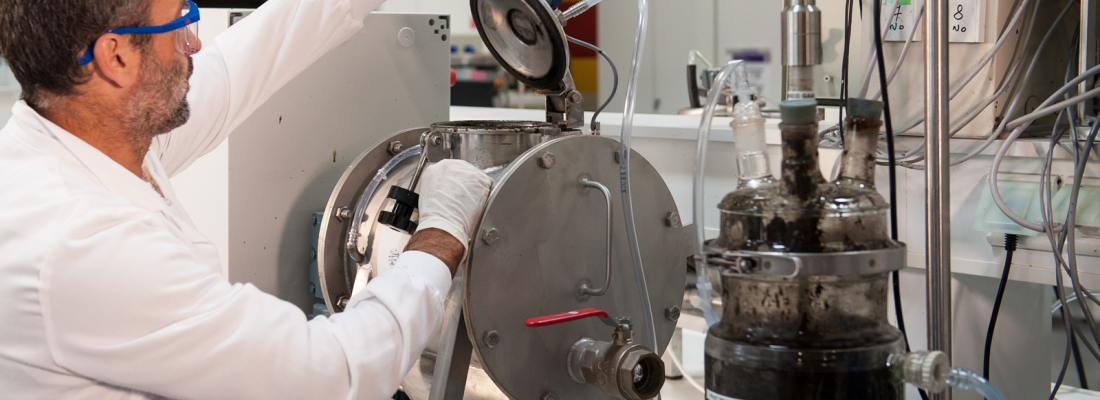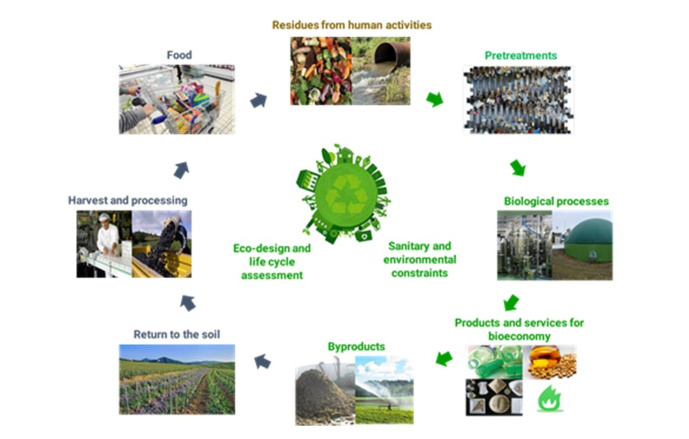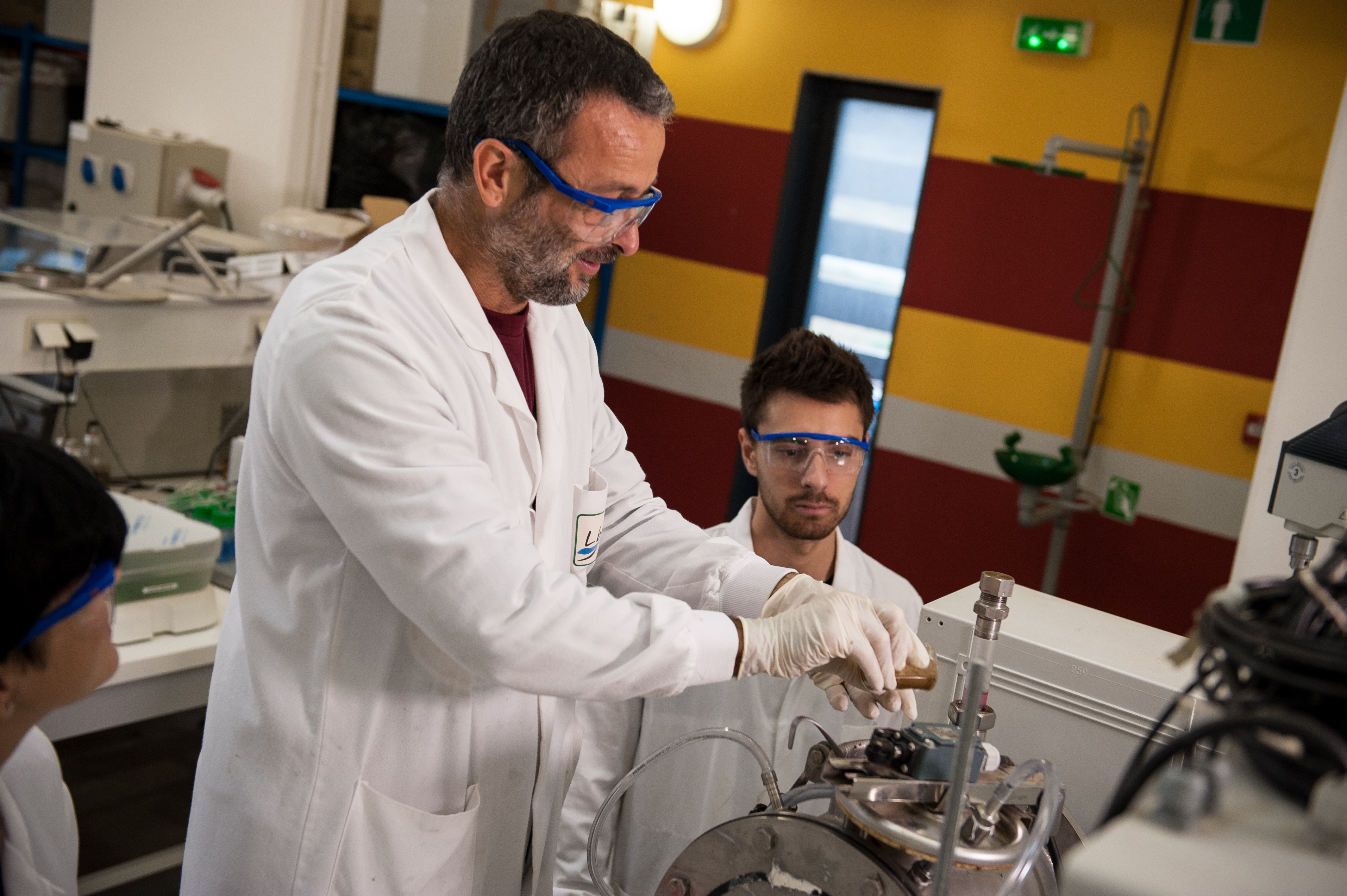Bioeconomy Reading time 2 min
Beyond anaerobic digestion: waste treatment for the sustainability of industrial sectors
Published on 03 July 2020

Anaerobic digestion produces biogas, a renewable energy
Anaerobic digestion produces methane (the main component of biogas) from agricultural or urban biowaste, thanks to the break-down of organic matter by a microbial community. The residual organic matter is thus used to produce a renewable source of energy, biogas, a substitute to fossil natural gas and which can be used, for example, to produce electricity, heat or as fuel. It contributes to closing the loops through the use in agriculture of digestates resulting from the anaerobic digestion of organic waste. Anaerobic digestion (AD) has been studied and applied for more than 100 years and is still under continuous development. The advanced anaerobic digestion approach studied by INRAE researchers nowadays aims to implement the most efficient and sustainable recovery and reuse processes.
Inappropriate waste management can lead to high costs and significant losses of resources, both in terms of energy and materials, as well as negative impacts on the environment (environmental pollution, greenhouse gas emissions). Efficient waste management requires a reduction in waste production, but also effective treatment and resource recovery via processes that create value while reducing pollutant flows. Although treatment of agrifood industry byproducts for resource recovery is a widespread practice, challenges remain for resource recovery and reuse of some residues, such as urban bio-waste or livestock manure, because of their characteristics (dilution, diversity, variability, pollutant load, etc.).
Environmental biorefinery: giving value to residues

Fig.1: The Environmental refinery and its contribution to a closed loop agriculture © INRAE
Environmental biorefinery (Fig. 1) makes it possible to expand the potential of processes for treating residues resulting from human activity, such as urban, industrial and livestock effluents, bio-waste, co-products of agriculture and the agrifood industry. In addition to pollution treatment, these processes provide multiple functionalities in terms of by-product recovery and services provided for the bio-economy, such as the production of biomolecules, renewable energy, water recycling, etc. It also offers the possibility of contributing to the closing of agricultural cycles by allowing these flows to return to the soil, for example through the use in agriculture of digestates resulting from the anaerobic digestion of organic waste.
A strategy of using waste as a real raw material
Indeed, it is estimated that nitrogen, phosphorus and potassium (NPK) contained in waste streams generated by economic activities such as livestock production, food processing and household waste could cover 2.7 times the nutrient inputs provided by chemical fertilizers. Today, the linear economic model and certain agricultural and livestock practices favour the concentration of organic matter and nutrient flows, thus creating areas of polluted surpluses, deficit areas dependent on chemical fertilizers, etc. The environmental biorefinery approach can help reverse this trend through its strategy of using waste as a real raw material.
Opportunities for regional economic growth
In a context of resource scarcity, this diversification of sources could reduce the pressure on the natural environment, while creating opportunities for economic growth. The INRAE researchers’ work led to the proposition of a typology of digestates and new utilizations, coupled to a tool for evaluation of the treatment impact on agronomic quality criteria (i.e. satisfy water needs, provide mineral elements and organic materials in a rational manner) under the constraints of environmental and health safety regulations (chemical and biological contaminants).
Together with anaerobic digestion processes that undergo strong industrial development in the waste treatment sector, INRAE’s scientists are studying alternative bioconversion processes of organic matter into biomolecules of interest (organic fatty acids, alcohols…) and/or new forms of energy such as hydrogen, an energy vector of major interest for tomorrow’s mobility.

Photo: Analysis being carried out in the Environmental Biotechnologies Laboratory in Narbonne, INRAE Occitanie-Montpellier. © INRAE, B. Nicolas
